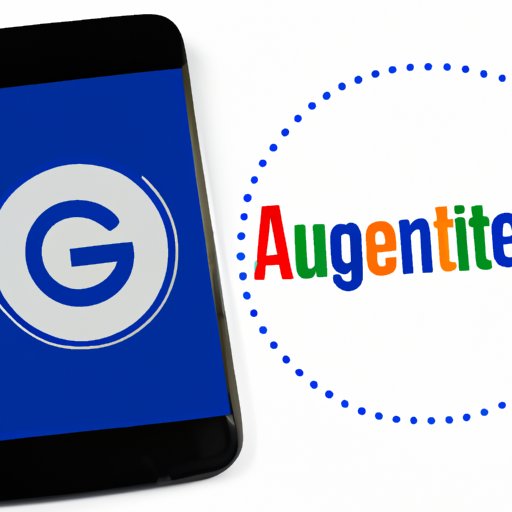
I. Introduction
In today’s digital age, maintaining online security is more important than ever. With cyber attacks becoming increasingly common, it’s essential to take steps to protect your personal information and online accounts. One powerful tool for enhancing online security is Google Authenticator. In this article, we’ll explore what Google Authenticator is and how to use it to protect your online accounts from hacking attempts.
II. Step-by-step guide on how to set-up and use Google Authenticator
The first step in using Google Authenticator is to download and install the app. Once you have installed the app, you can begin setting up your accounts. To set up an account, follow these steps:
- Visit the website of the service you want to protect
- Go to the security or two-factor authentication section of the account settings
- Select Google Authenticator as your preferred authentication method
- Open the Google Authenticator app on your phone or other device
- Scan the QR code on the screen or enter the code manually
- Confirm the setup process on both the app and the website
- Test the authentication to ensure it works properly
It’s important to note that some websites may require additional steps or security measures. Be sure to read the instructions carefully and follow them closely.
If you have any issues during setup or need to troubleshoot, try the following:
- Make sure your phone’s clock is set correctly; this can cause issues with authentication codes
- Try re-scanning the QR code or entering the code manually once again
- Check if your app is up to date or if there are any known issues with the app
III. The benefits of using Google Authenticator
Using Google Authenticator offers several benefits for online security:
- It’s a more secure way of authenticating accounts compared to traditional methods such as passwords
- One-time codes that expire quickly prevent hacking attempts even if the attacker gains access to your password
- It’s easy to use and set up for most accounts
In comparison to other authentication methods, Google Authenticator is considered a more secure option. This is due to the fact that it generates one-time passwords that expire quickly, ensuring that even if a hacker manages to intercept one, they won’t be able to use it to authenticate themselves in the future.
IV. Tips for securing online accounts
In addition to using Google Authenticator, there are several other best practices for securing online accounts:
- Use strong and unique passwords for each account
- Enable two-factor authentication whenever possible
- Avoid writing down passwords or sharing them with others
- Use a password manager to generate and store passwords securely
- Regularly update passwords and check for any suspicious activity on accounts
V. Real-life examples of potential cyber attacks
The risks of accessing unsecured accounts can be severe. In some cases, cybercriminals can use weak security practices to steal personal data, access sensitive information, and perform other malicious actions. By implementing security measures like Google Authenticator, you can reduce the risk of falling victim to these types of attacks.
VI. Review of Other Authentication Mechanisms
While Google Authenticator is an effective method for enhancing online security, there are other authentication options available. Here are some of the most common:
- SMS authentication: this method involves receiving a code via text message
- Hardware tokens: physical devices that generate authentication codes
- Biometric authentication: using fingerprints or facial recognition technology
Each authentication method has its pros and cons. SMS authentication, for example, is convenient but can be less secure than other methods. Biometric authentication is often considered more secure but can be less convenient depending on the device being used. Ultimately, the choice of authentication method will depend on your specific needs and preferences.
VII. Troubleshooting common issues
Even with the best security measures in place, issues may still arise. Here are some common issues that users may encounter when using Google Authenticator, and how to deal with them:
- If you lose your phone or uninstall the app: contact the service provider and follow their instructions for setting up a new authentication method
- If the app stops generating codes or your codes are incorrect: ensure that your phone’s clock is set correctly and follow the previous troubleshooting tips listed above
- If you forget your password: follow the password recovery process set up by the service provider
VIII. Video Tutorials
For those who prefer visual guides, there are several video tutorials available for Google Authenticator. These tutorials provide step-by-step instructions on how to use the app for maximum security. They can be found on YouTube or on the Google Authenticator website.
IX. Conclusion
Using Google Authenticator is an effective way to enhance online security and protect against cyber attacks. By following the step-by-step guide outlined in this article, users can set up Google Authenticator for their online accounts and enjoy the benefits of more secure authentication. Remember, it’s essential to take steps to secure your online accounts. Whether you choose Google Authenticator or another authentication method, do what you can to protect yourself and your personal information.




